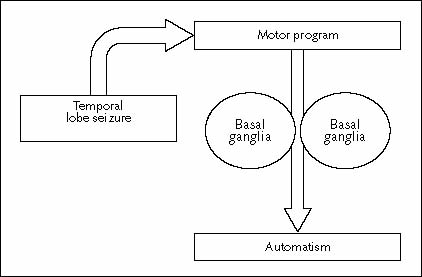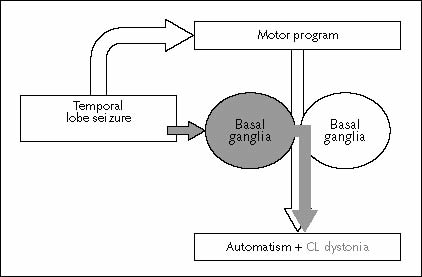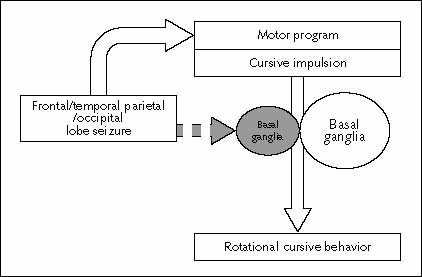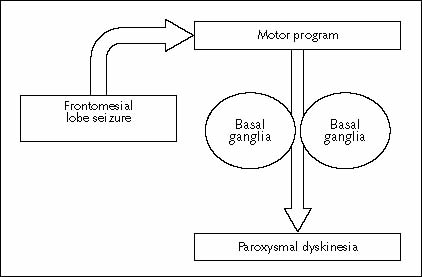Epileptic Disorders
MENUSeizures and the basal ganglia: a review of the clinical data Volume 4, supplement 3, Supplement 3, December 2002


|
|
||
|
|
Figure 1A and 1B. A theoretical view of automatism (1A) and superimposed controlateral dystonia (1B) occurring during temporal lobe seizures. The facilitation of the motor program responsible for automatism during temporal lobe seizures (figure 1A) is overcome when unilateral basal ganglia disorganized activity (because of spreading epileptic activity to the putamen) leads to contralateral ictal dystonia (figure 1B). In this model, postural dystonia is presumed to preferentially involve a descendant pathway from the pallidum to the brainstem and the spinal cord (see text for detailed pathophysiology). | |
|
|
||

|
|
||
|
|
Figure 2. A theoretical view of rotatoryseizures occurring during partial epilepsy. Localization-related seizures of various origin may occasionally lead to the activation of a motor program leading to the impulsion (urge) to display cursive behavior (cursive seizures). As the cursive program is conveyed through basal ganglia, the presence of an interhemispheric imbalance (due to lesion, or functional disability due to spreading epileptic discharge) could lead to an imbalance in the behavioural output, causingrotatory behaviour. | |
|
|
||

|
|
||
|
|
Figure 3. A theoretical view of paroxysmal dyskinesia-like seizures occurring during frontomesial epilepsy. The production of paroxysmal dyskinesia duringfrontomesial seizures is thought to be directly linked to the activation of abnormal patterns of movements both within the basal ganglia and the premotor structures. | |
|
|
||

